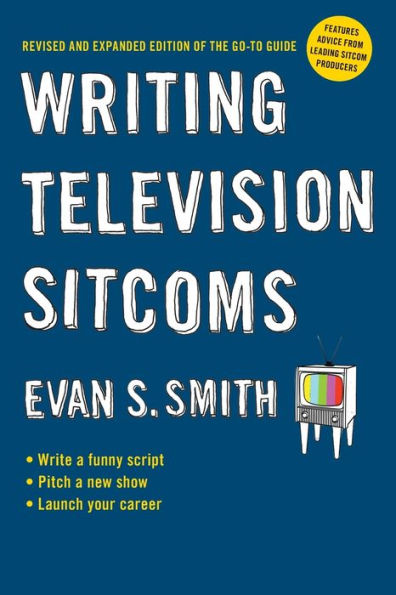Table of Contents
Introduction xv
Part 1 Writing Premise-Driven Comedy
1 The Game Plan 3
Career Paths 4
Getting Started 7
2 First, Some Theory 9
The Mechanics of Laughter 9
Characteristics of Comedy 11
The importance of Tension 16
3 Putting Theory into Practice 18
Seamless Humor 18
Consistency 19
Comedy Output 19
The Traditional Approach to Sitcom Writing 20
4 Level One: Premise-Driven Comedy 22
A Different Approach: Comedy in the Story Premise 23
Predicaments 25
Character Mix 31
Style of Comedy 36
Casting 40
5 Level Two: Comedy in Sequences and Scenes 42
Compound Story Predicaments 43
Stir Up the Character Mix 44
Mix and Match 44
Three Things to Remember 45
6 Level Three: Comedy in Dialogue and Actions 47
Building Jokes 48
Setups 48
Punchlines 57
Funny Actions 65
Miscellaneous Comedy Tips 69
About All of These Labels 71
Finding Your Comedic Voice 72
Part 2 Writing a Professional Script
7 Doing Your Homework 77
Which Series to Pick 79
Researching the Series 81
Studying the Premise 82
8 Developing an Episode Premise 87
Advice from Our Producers 87
Dreaming Up Stories 88
Picking Your Best Ideas 90
Turning Ideas into Springboards 92
High-Concept Stories 94
9 Developing the Story 96
Creating a Beat Sheet 97
Story Structure: Linear vs. Thread 99
Story Threads vs. Subplots vs. Ensemble Stories 101
Stories Without Endings 102
Serialized Stories (Story Arcs) 103
Dramatic Structure vs. Broadcast Format 104
Story Tips 106
Comedy's Impact on Story 109
How the Production Process Affects Your Script 110
Nail the Story, the Rest is Easy 113
10 Creating Funny Characters 115
Remember the Mix117
Character Arcs 117
Character Types 118
Visiting Characters 122
11 Writing An Outline 125
Writing to Sell, Not Educate 126
Building an Outline 127
How it Should Look on Paper 130
Stylistic Tips 135
Rewriting an Outline 138
Advice from Our Producers 139
12 Writing the First Draft 142
Just Do It 142
Writing Scenes 143
Harvesting Comedy Built into the Premise and Scene Levels 147
Professional Script Format 147
Writing Scene Descriptions 148
Writing Dialogue 151
Miscellaneous Tips l55
Planting Exposition 157
Advice from Our Producers 159
When That First Draft is Finished 162
13 Rewriting the Script 164
When Rewriting by Yourself 169
Advice from Our Producers 171
Once the Script is Finished 172
Part 3 A Battle Plan for Launching Your Career
14 Step One: Developing a Strategy 177
The Job Market 177
How the Writer Fits In 180
A Writer's Workweek 182
Writing is a Business 185
Ageism 186
Putting Food on the Table 186
Must You Live in Los Angeles? 189
15 Step Two: Landing an Agent and/Or Manager 191
Developing a Hit List 194
Before Picking Up the Phone 201
Prepare a Phone Spiel 203
Making the Call 205
Submitting Your Material 208
Testing the Waters if You Don't Live in LA. 209
Following Up on Submissions 211
If you Fail to Land Representation 212
You Get an Offer! 214
Signing the Contract 215
Once You've Signed with Someone 217
16 Step Three: Getting Your Work Out There 218
Scouting the Market 218
Hiring Windows 220
Working with Your Rep 222
Which Scripts to Send 223
Being Picky about Jobs 223
Cold-Calling Producers 224
Other Strategies for Reaching Producers 225
Keep Writing 228
Writing in Teams 229
Rejection 230
Dealing with Writer's Block 230
Protecting Your Work 231
Who Keeps the Copyright? 234
The Writers Guild of America 235
17 Step Four: Pitching for Assignments 239
The Call Comes In! 240
Preparing for the Pitch 240
The Pitch 243
Advice from Our Producers 245
What Might Happen 248
The Contract 250
The Money 252
18 Step Five: Landing a Staff Job 254
Becoming a Staff Writer 254
Office Politics 256
Roundtable Writing 257
Advice from Our Producers 258
Staff Job Contracts and Compensation 262
19 Step Six: Climbing the Ladder 264
The Care and Feeding of Reps 265
Taking a Development Deal 268
20 Creating A New Series 271
Creating a Series Format 272
Writing a Pilot Script 275
Selling a Pilot 279
Going in to Pitch 280
Producing a Homegrown Pilot 282
The Money 284
Time to Wrap Up! 287
Appendix A Script Format Guidelines 289
Appendix B Additional Resources 311
Endnotes 321
Index 325



